Faeries, Fraud and Frenzies: The Oxford Dictionary of Celtic Mythology by Dr James MacKillop
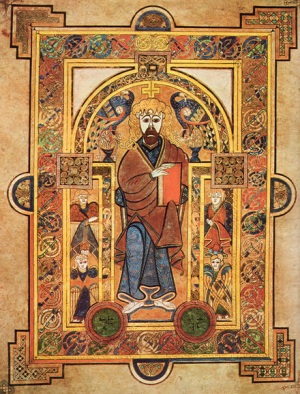
Celtic Mythology is a foundation stone supporting, along with the language, music and dance, our collective Celtic identity. “The Oxford “Dictionary of Celtic Mythology” by Dr. James MacKillop can be considered one of our primary reference texts. The author is a former Professor of English at Syracuse University, former visiting Fellow in Celtic Languages at Harvard University and is past president of the American Conference for Irish Studies.
Published by Oxford University Press in 1998, this work boasts over 4,000 alphabetised entries on deities, sacred places and the personalities associated with the Celtic revival and ancient texts. The entries are presented in a range from succinct definitions to comprehensive narratives. Included is a brief and lucid “Pronunciation Guide” to the modern Celtic languages. The modern Celtic tongues have branched over the millennia in to two language groups. This guide sets apart the Goidelic pronunciations of Manx, Scottish Gaelic and Irish versus that of the Brythonic pronunciations of Cornish, Breton and Welsh.
Celtic Mythology is rooted in the Oral traditions of the six Celtic nations and in surviving manuscripts. Too few texts have survived the savagery and wanton destruction directed at the Celts over the centuries during the emergence of the modern nation states of England and France. The surviving written Celtic source documents are due to accidents of history and geography, mainly Irish and Welsh in origin. The reasons for this are deftly placed into context by MacKillop in the introduction: “The phrase ‘Celtic texts’ in this volume refers primarily to those written in the Irish and Welsh languages. Irish is the oldest written vernacular in Europe, with a literary tradition possibly beginning in the sixth century, with the coming of the Christian scribes, that has produced hundreds of narratives. Written Irish-language literary traditions survived the coming of the Anglo-Normans (1169), the flight of the native aristocracy (1607), Cromwellian pogroms (the 1650s) and in to the eighteenth century. Welsh literary traditions, for all its artistic splendour begins several centuries later, long after Christianity was well established and exists in much smaller volume. A third, much more modest written tradition exists in Gaelic Scotland, related to old Irish...and continued by distinguished seventeenth and eighteenth century bards.”
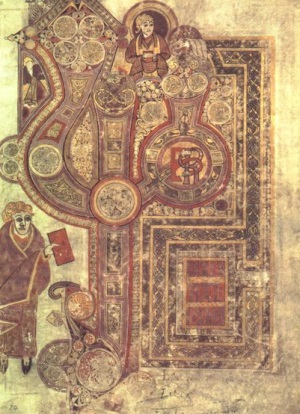
The Folkloric traditions of the Six Nations often amplify and sometimes deviate from the written record and provide an important source of our knowledge of the Celtic pantheon. The oral tradition has also been used by MacKillop in constructing the entries: “The term Celtic Mythology has been in widespread use since the early twentieth century, usually describing old Celtic, medieval Irish and Welsh sources. It does not usually apply to Scottish Gaelic, Manx, Cornish or Breton (folklore) traditions, but entries from those have been included here, especially when they provide parallels with personalities and motifs from earlier times.”
The depth of the content is impressive. A random selection of the offerings gives us an entry on the May 1st Celtic Feast day of Beltane which according to MacKillop, may or may not be based on the worship of the Pan-Celtic deity Bel. Another entry is on the Breton fairies known as Korrigans, described as; “Wanton, impish, sprightly female fairies who desire sexual union with humans. Thought to be descended from ancient Druidesses, Korrigans are especially vicious towards celibate Catholic priests’”.
There is an expansive entry on the strange tale of James MacPherson, a controversial figure whose name invariably comes up in connexion with the Celtic revival of the 18th and 19th centuries. The Celtic Revival is the period in the 1700’s and 1800’s when Celtic literature, art and history began to be respectable academic pursuits. MacPherson’s works, best known as “The Poems of Ossian”, became a literary sensation. This body of work was claimed by MacPherson to be based on translations of ancient Celtic texts. Peter Ellis in his work “The Celtic Dawn” characterizes the impact of the Poems as a “..Cultural bomb which created a Romantic Pan Celtic movement and influenced the Romantic Movement in Europe.”
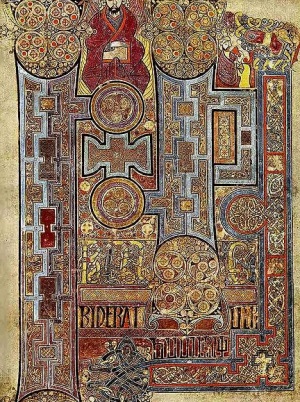
The European intelligentsia of the day were electrified by MacPherson’s work, they all thought they had found something new. The likes of Napoleon, Thomas Jefferson and Voltaire publicly praised the “Poems of Ossian”. Franz Schubert went further and created musical composition based on MacPherson’s prose and no less a light than Felix Mendelssohn got in on the act with the hauntingly beautiful Concert Overture entitled “The Hebrides”, also known to concert goers as “Fingels Cave”. The tragic irony of all this was that concurrent with the newly discovered admiration for Celtic culture was the fact that the Celts were being brutalised by a vicious program of forced assimilation at the hands of the British and French ruling classes.
The truth is that MacPherson was a fraud. MacPherson dishonestly claimed that his poems were based on ancient Scottish Gaelic manuscripts when in reality they were based on the Oral Folkloric tradition of the Highlands. The author James MacKillop sums it up neatly; “The poems authenticity was challenged from their initial publication, and the ‘originals’ MacPherson produced to back up his claim were fabricated. Bogus though they may have been, MacPherson drew learned attention to Irish and Scottish traditions....”. MacKillop continues, “By the mid-nineteenth century the perception that Celtic speaking peoples, impoverished and despised though they were, were of an ancient and little known past began to penetrate the learned consciousness.” We owe a great deal to James MacPherson, may god rest his soul.
The Oxford Dictionary of Celtic Mythology
Get your copy from Amazon.com (US$) or Amazon.co.uk (GB£):
My favourite passage as I sit here and write this review is one of the twenty three entries on the mischievous and often times terrifying linchpins of Celtic Mythology, the ubiquitous Fairy. The entry “Fairy Ring” shows the modest wit of James MacKillop: “A circle found in a lawn or pasture land thought to have been caused by dancing fairies. Scientific explanations for this widespread phenomenon are less poetic; the most usual is that it is caused by the spreading mycelia of a fungus. The Fairy Ring may appear only as a depression in the grass but may also include sprouting mushrooms. If a human steps into the ring he or she is compelled to join the fairies in their wild dancing which would seem to occur in a few minutes but in fact lasts for seven years or more. The unfortunate mortal dancer can be rescued by having someone from outside the ring grab hold of his or her coat tails. The concept is widely discussed in the Celtic languages."
Well I’ll tell you what I think. These scientists, they don’t know everything. It isn’t the fungus that makes the ring, it’s the spillage of the fairy juice from their wee cups whilst the little buggers dance. And I’ll tell you something else, that part about the seven years, well I can attest from personal experience that it is true. That’s why I can’t remember much from the age of 28 to 35. For it was when I was 35 that my dear suffering wife yanked me out of that blasted Fairy Ring.
We at Transceltic highly recommend “The Dictionary of Celtic Mythology” by the esteemed Celtic Scholar Dr. James MacKillop. It captures the treasures of our shared culture. Dr MacKillop has performed a true service. This work is a comprehensive compendium of Celtic mythology, legend and Folklore “A unique guide to one of the World’s richest Mythological traditions”.
A Curious Aside
A Little Bit Of Celtic Interest In The Caribbean
Transceltic were recently in the Caribbean port of Willemstad on the Dutch island of Curacao. We spotted a copy of MacKillip's book in the library of the Maritime Museum, right above a photo of the former Queen Beatrix of the Netherlands.
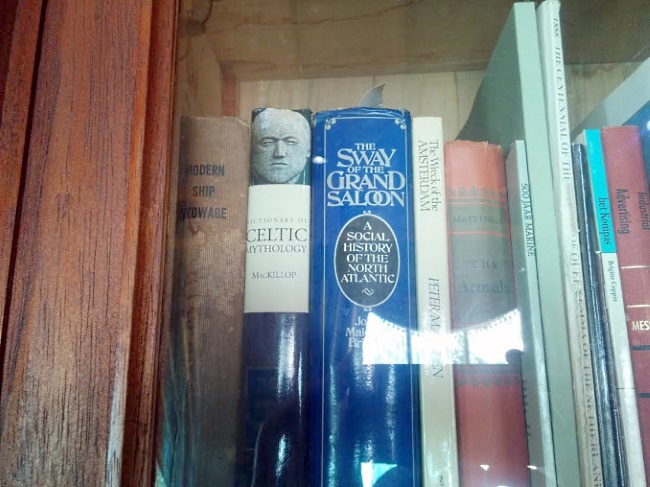
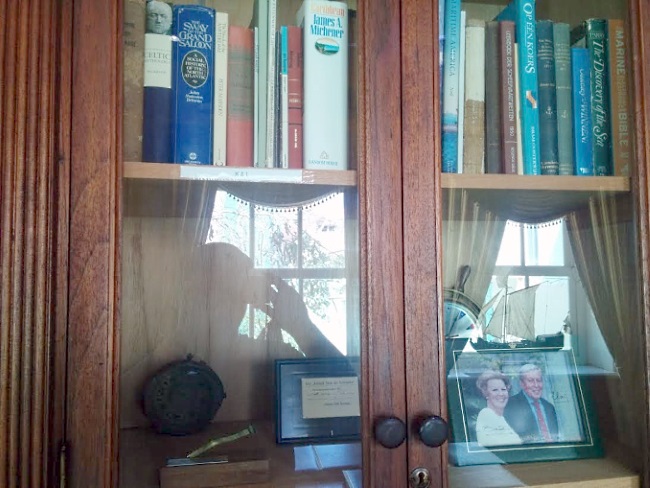
Content type:
- Pan-Celtic
Language:
- English
- Log in to post comments






